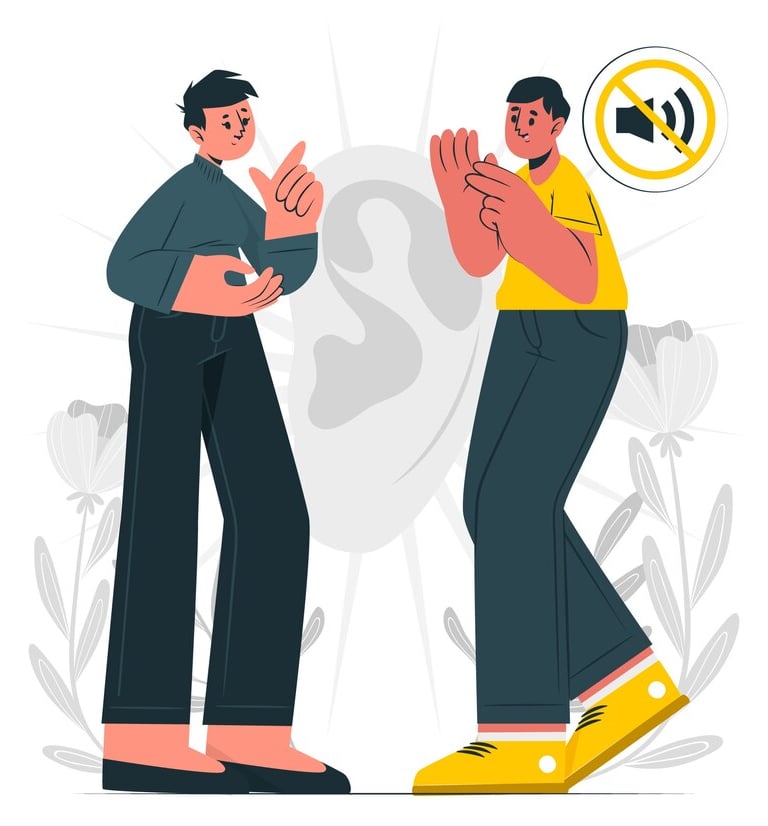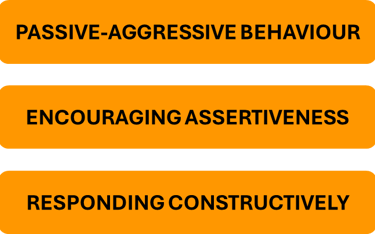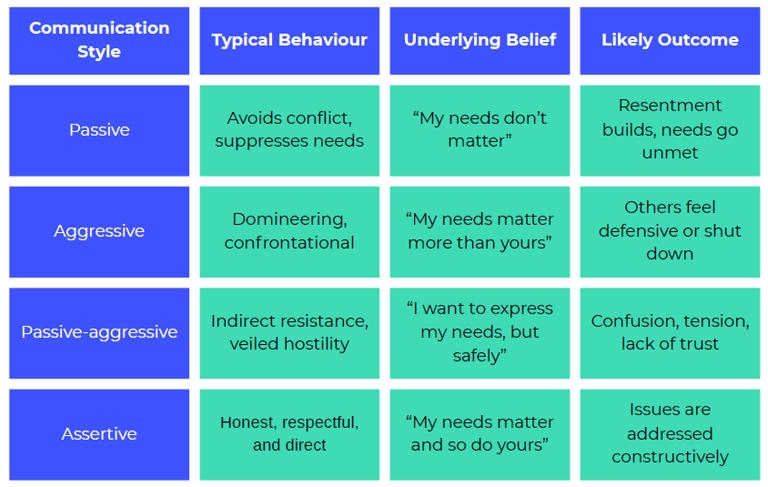From Shadow Talk to Brave Conversations


The impact of ‘passive-aggressive behaviour’ is showing up in leadership discussions.


Ever left a meeting feeling like something was said… without actually being said? That subtle resistance, the awkward silence, the polite nod followed by no action. “No problem, I’ll get on with it,” but somehow, it never quite materialises.
It might be passive-aggressive behaviour at play, something I’ve seen surface time and again in leadership discussions.
In cultures that value openness and harmony, overt conflict is rare. But that doesn’t mean tension isn’t present. Instead, it often takes on quieter forms, delayed follow-ups, half-hearted engagement, or veiled sarcasm. Frustrations don’t vanish, they just find subtler ways to escape; as Karl Yung said “we leak the truth”!
That’s what led me to write this article, a practical guide for recognising passive-aggressive patterns, responding constructively, and helping ourselves, and others, shift toward clearer, braver conversations.
Because brave conversations build better outcomes and stronger relationships.
What is Passive-aggressive Behaviour?
Passive-aggressive behaviour is the expression of negative feelings, such as anger, resentment or dissatisfaction in either indirect, subtle, or avoidant ways. It’s not openly hostile, but it’s not exactly cooperative either.
Typical Signs Include:
Sarcasm or backhanded compliments
Withdrawing or going silent instead of discussing issues
Agreeing in the moment, but resisting in action. I always explain this as “saying ‘yes’ and doing ‘no’”
Withholding information, support, or enthusiasm
Procrastination or doing tasks half-heartedly
It often leaves people around the individual feeling confused, frustrated and even attacked or second-guessing themselves. All of which leads to being stuck in a cycle of unproductive and unsaid confrontations.
How it Differs from Passive or Aggressive Communication
Passive-aggressive behaviour is the expression of negative feelings, such as anger, resentment or dissatisfaction in either indirect, subtle, or avoidant ways. It’s not openly hostile, but it’s not exactly cooperative either.


Encouraging Assertive Conversations
If you lead others, or are simply trying to break these patterns in yourself or a team, here are some ways to encourage more assertive and respectful communication:
Be tough on the problem, not the person Be calm, direct and respectful, even when the conversation is hard.
Call it out, without blame “I’m noticing some tension here, should we unpack that together?”
Create safety Show that it’s okay (and encouraged) to express disagreement or challenge ideas.
Be curious, not critical “That sounded like there’s more going on, want to talk it through?”
Teach language tools Using “I” statements, constructive feedback, and boundary-setting language can go a long way.
How to Respond to Passive-Aggressive Behaviour in the Moment
This is often the trickiest part. It’s easy to get drawn into the undertone and mirror it, fighting fire with fire, but that rarely helps.
Instead, try this:
Pause and stay grounded
Don’t react emotionally. Take a beat, count to three.
Acknowledge the behaviour gently
“That sounded a bit sharp, are you okay with how this is going?”
Invite openness
“If there’s something not working for you, I’d really prefer we talk about it directly.”
Set clear expectations
“When communication isn’t clear, it slows everyone down. Let’s agree to be upfront with each other.”
Avoid enabling
Don’t rescue, accommodate, or smooth over just to avoid discomfort. That can reinforce the behaviour.
Why People Lean Towards Passive-aggressive Behaviour
This behaviour is often a learned survival strategy, especially in environments where directness has been met with punishment, silence, or escalation.
It can feel like a subtle form of protest or control, but it rarely gets the desired result.
People may default to passive-aggressiveness when:
They fear conflict or rejection
They don’t feel safe expressing themselves
They believe speaking up won’t change anything
They’ve learned to avoid confrontation at all costs
They lack the tools or confidence to be assertive
How to Curb Your Own Passive-Aggressive Tendencies
If we are honest with ourselves, we all do it sometimes, especially when we’re tired, under pressure, or don’t feel safe. The key is noticing it and shifting your response.
Try this self-check:
“What am I really feeling?”
“What do I want that I’m not asking for?”
“Why don’t I feel I can say this directly?”
Then, practice a clearer, more assertive version:
Instead of: “Fine. I’ll do it myself… again.”
Say: “I’m feeling a bit overloaded and need help. Can we share this out differently or extend the deadline?”
And Remember...
"You don't have to wait for someone else to change their behaviour before you change yours."
I quote this alot!


